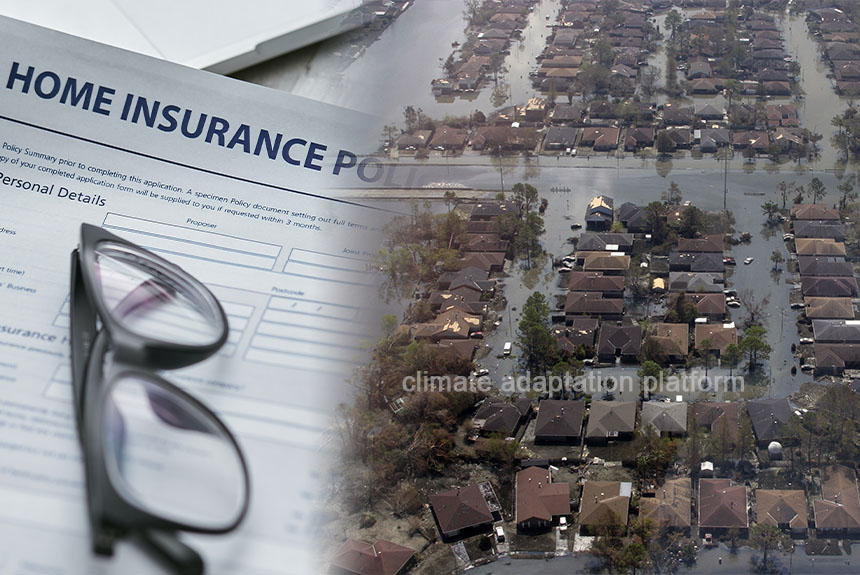The increasing severity and frequency of floods are also increasing the cost of damage to homes and properties, creating a financial strain on insurance providers. Insurance companies need to adjust their rates to match actual risks and rising insurance payouts.
In the United States, direct damages caused by floods rose to at least 300 billion dollars; private insurance does not generally include residential flood coverage; instead, the federal government provides this through the National Flood Insurance Program.
By federal legislation, the purchase of flood insurance through the NFIP or from private insurance providers is mandatory for homeowners- with government-backed mortgages and businesses in high-risk flood areas and for everyone else, flood insurance coverage is a voluntary choice.
According to The Economist, the NFIP has a history of underpricing risk and allowing development in floodplains that left the program more than $20 billion in debt to the Treasury as of 2022. The article says that, on average, the amount of premiums the NFIP collects each is less than it pays out, and the payouts are also less than the amount of damage caused by floods, so homeowners have to shoulder the losses.
For homeowners to get the correct or sufficient flood coverage, premiums must also reflect the expected coverage. Floods are becoming more destructive, and the NFIP and other private insurance providers need to revise their rating methodologies to reflect current flood risks and damages so they will avoid falling into debt or losing money when it’s time for policyholders to file for a claim.
In 2012, Congress tried to reform the program by passing legislation updating the flood maps, only to be reversed due to pushback from voters when they realized that changes would increase their premiums.
In 2021, the Federal Emergency Management Agency (FEMA), which administers the NFIP, introduced Risk Rating 2.0, presented a new calculation for flood insurance premiums since its inception, and includes more flooding sources, including heavy rainfall. Details of the current rating structure and the risk rating are discussed in the Congressional Research Services report.
The new premium will take effect on 1 October 2021 for new NFIP policies, for existing policyholders’ new rates will take effect on 1 April 2022 and for all policies, they will move to Risk Rating 2.0 pricing when they renew after 1 April 2022, the report says.
According to USA Facts, FEMA’s new Risk Rating 2.0 system has redistributed premiums for more than 5 million policyholders across the United States. The new system aims to provide equitable insurance premiums – by raising premiums for high-income, high-risk homeowners and lowering costs for low-income families. However, the impact for policyholders still varies depending on where they live. Those living in high-risk flood zones will generally see a rise in premiums.
Around 1.2 million policyholders saw their dividends decrease, and 3.8 million premiums increased. Policyholders who saw a decrease in their premiums are those living in the following states: Alaska (85.9%), Washington DC (72.5%), Maryland (61.4%), and Michigan (54.3%). States with the most significant percentage of policies with increased premiums include Hawaii (87.1%), Texas (86.1%), Mississippi (85.6%), and West Virginia (82.6%). Florida, Louisiana, and Texas had more than 2.4 million policyholders’ rates increase.
FEMA data shows that flooding impacted 99% of counties in the United States between 1999 and 2019, but only 5% and 15% of homeowners have flood insurance, according to the National Association of Insurance Commissioners.
Given the cost of damage from floods, American households should look into getting flood insurance coverage, but how can the country encourage greater uptake of flood insurance in the country?
An article from the Joint Center for Housing Studies of Harvard University lists six obstacles that prevent American households from getting flood insurance coverage:
- unaffordability,
- lack of awareness of flood risks,
- lack of institutional enforcement,
- underfunded mitigation for floods at both property and infrastructure levels,
- and lack of transparent data on properties, property owners, and their respective policies that prohibit a sound assessment between insurance providers.
The article notes that these obstacles also present opportunities for federal interventions.
Sources:
Accounting for flood risk would lower American house prices by $187bn. (2023, April 25). The Economist. Retrieved from https://www.economist.com/graphic-detail/2023/04/25/accounting-for-flood-risk-would-lower-american-house-prices-by-187bn
Masterton, L. (2023, June 7). Flood Insurance: What It Is And What It Covers. Forbes. Retrieved from https://www.forbes.com/advisor/homeowners-insurance/flood-insurance/
National Flood Insurance Program: The Current Rating Structure and Risk Rating 2.0. (2022, April 4). Congressional Research Service. Retrieved from https://sgp.fas.org/crs/homesec/R45999.pdf
Which states have been hit the hardest by flooding? (2022, September 26). USA Facts. Retrieved from https://usafacts.org/articles/which-states-have-been-hit-the-hardest-by-flooding/
Martin, C. (2023 March 10). How do we encourage greater flood insurance in America? Joint Center for Housing Studies of Harvard University. Retrieved from https://www.jchs.harvard.edu/blog/how-do-we-encourage-greater-flood-insurance-america



Leave a Reply